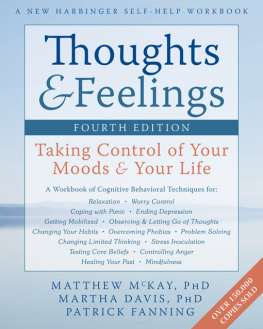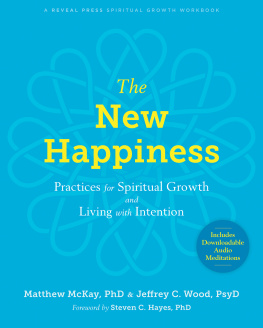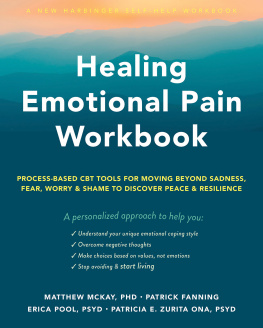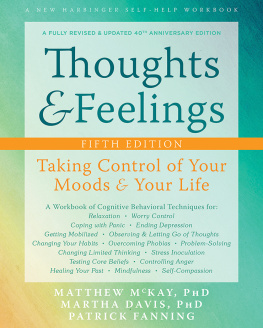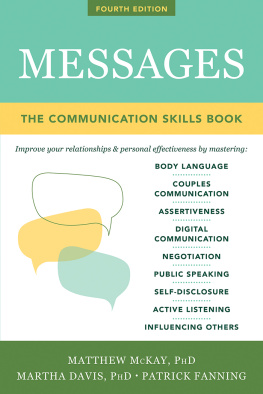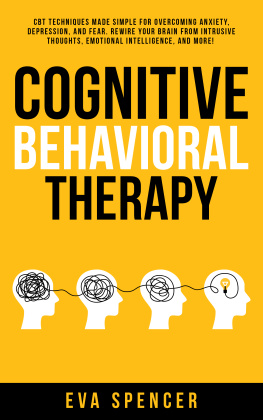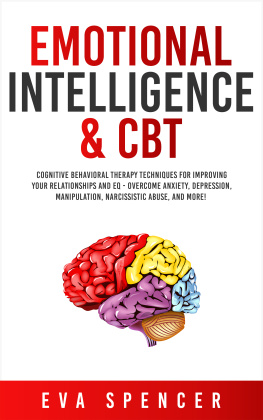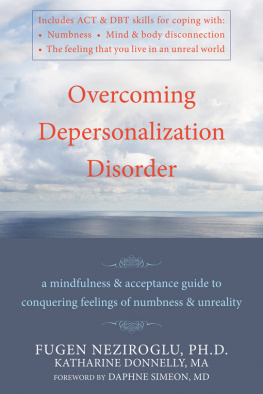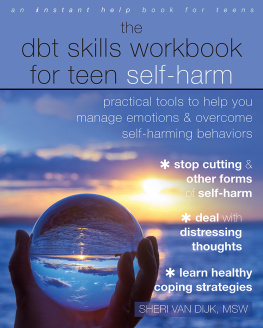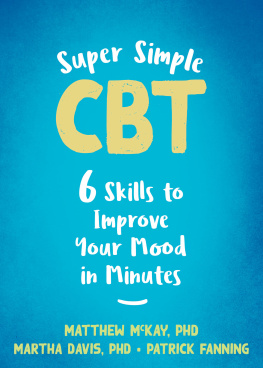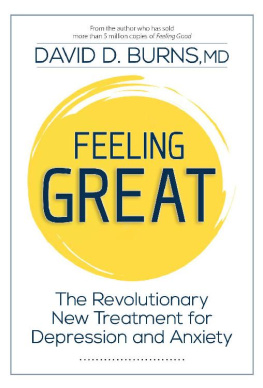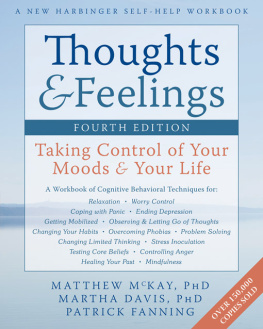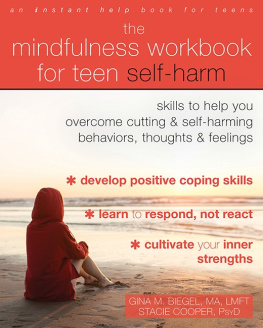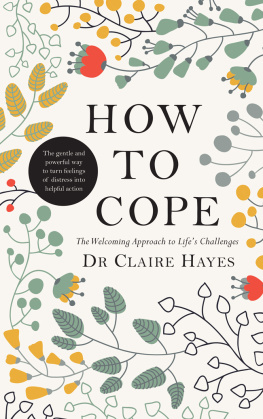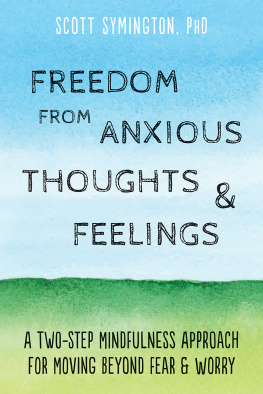Matthew McKay, PhD, is a professor at the Wright Institute in Berkeley, California. He has authored and coauthored numerous books, including The Relaxation and Stress Reduction Workbook, Self-Esteem, and Your Life on Purpose. His books combined have sold more than three million copies. McKay received his PhD in clinical psychology from the California School of Professional Psychology. In private practice, he specializes in the cognitive behavioral treatment of anxiety and depression.
Martha Davis, PhD, was a psychologist in the department of psychiatry at Kaiser Permanente Medical Center in Santa Clara, CA, where she practiced individual, couple, and group psychotherapy for more than thirty years prior to her retirement. She is coauthor of The Relaxation and Stress Reduction Workbook.
Patrick Fanning is a professional writer in the mental health field. He is coauthor of many self-help books, including The Relaxation and Stress Reduction Workbook, Self-Esteem, and The Self-Esteem Companion.
Chock-full of systematic strategies for the treatment of a wide variety of psychological problems. Eminently readable and helpful for professionals as well as patients.
Aaron T. Beck, MD, president of the Beck Institute for Cognitive Therapy and Research Psychopathology
An outstanding book. I recommend it without reservation for both general readers and therapists. It stands apart from other similar books in its reliance on scientific data, not fad, hype, or mysticism.
Jacqueline B. Persons, PhD, director of the San Francisco Bay Area Center for Cognitive Therapy and clinical professor in the Department of Psychology at the University of California, Berkeley
An excellent resource, reference tool, treatment manual, therapy coach, and compendium of techniques.
Arthur Freeman, EdD, ABPP, HSPP, president of the Freeman Institute for Cognitive Therapy and director of clinical training and supervision for the Center for Brief Therapy in Fort Wayne, IN
One of the most comprehensive and empirically sound guidebooks in all of self-help literature. All of the major problems in living are covered.
Cory F. Newman, PhD, clinical director of the Center for Cognitive Therapy and associate professor of psychology in psychiatry at the University of Pennsylvania
For professionals and the public, this wonderful workbook, like a wise teacher, can help make a positive difference.
Thomas F. Cash, PhD, professor emeritus of clinical psychology at Old Dominion University in Norfolk, VA
A jewel of a book: supportive and empathetic, short on platitudes and long on practical applications. A must-buy for all cognitive behavioral therapists.
Thomas E. Ellis, PsyD, ABPP, professor of psychology at Marshall University in Huntington, WV
Publishers Note
This publication is designed to provide accurate and authoritative information in regard to the subject matter covered. It is sold with the understanding that the publisher is not engaged in rendering psychological, financial, legal, or other professional services. If expert assistance or counseling is needed, the services of a competent professional should be sought.
Distributed in Canada by Raincoast Books
Copyright 2011 by Matthew McKay, Martha Davis, and Patrick Fanning
New Harbinger Publications, Inc.
5674 Shattuck Avenue
Oakland, CA 94609
www.newharbinger.com
All Rights Reserved
Epub ISBN: 9781608822102
Acquired by Melissa Kirk; Cover design by Amy Shoup; Text design by Tracy Marie Carlson; Edited by Jasmine Star
The Library of Congress has Cataloged the Print Edition as:
McKay, Matthew.
Thoughts and feelings : taking control of your moods and your life / Matthew McKay, Martha Davis, and Patrick Fanning. -- 4th ed.
p. cm.
Includes bibliographical references and index.
ISBN 978-1-60882-208-9 (pbk.) -- ISBN 978-1-60882-209-6 (pdf e-book) -- ISBN 978-1-60882-210-2 (epub)
1. Cognitive therapy--Popular works. I. Davis, Martha, 1947- II. Fanning, Patrick. III. Title.
RC489.C63M34 2011
616.891425--dc23
2011035736
Contents
Preface to the Fourth Edition
The first edition of Thoughts and Feelings appeared in 1981. It was an introduction to cognitive behavioral therapy that was used by general readers and therapists alike. It provided simple, step-by-step instructions for a dozen specific techniques.
Over the years we came to realize the books limitations. To begin with, some of the techniques had not stood the test of time. Later studies had shown them to be less effective than newer, more powerful interventions. In addition, although cognitive behavioral therapists were developing multistep protocols to treat many disorders, the original edition of Thoughts and Feelings didnt show how to link a series of techniques together into an integrated treatment plan for problems like depression, panic disorder, or anger.
With the second, third, and now fourth editions of Thoughts and Feelings, the book has been revised to include more effective methodologies and reflect changes in modern practices. Thoughts and Feelings now offers multistep treatment plans for many mood-based problems. These plans are outlined in to show you a sequence of relevant chapters and techniques for each disorder. This is consistent with the way cognitive behavioral treatments are conducted during therapy: You take a series of steps to acquire skills that serve as building blocks in coping with problems.
For this edition, we have removed the chapter on thought stopping, a technique that in recent years has been shown to be of little value. We replaced it with a new chapter on defusion, a powerful technique now used in the third wave of behavior therapies as a core treatment. Defusion has impressive research support for helping manage anxiety, depression, and anger. We have also removed the chapter on coping during exposure, because experience has shown that relaxation techniques and coping thoughts work best when used before and after exposure, not during exposure.
Two chapters have been significantly revised and renamed in light of current research: Flooding has become Prolonged Exposure, and Stress Inoculation has become Brief Exposure. Finally, the chapter Getting Mobilized is now followed by a new chapter, Putting Values into Action, which stresses the consistent application of values to life goals.
In the second and third editions of Thoughts and Feelings, we sacrificed a bit of logic in order to keep the chapter numbering system consistent with the first edition, and thus reduce confusion in classrooms where students were using various editions. However, the cumulative changes since 1981 have finally necessitated a complete rearrangement of the table of contents so that the most basic skills are taught first, the more widely used interventions appear earlier, and the less common techniques or treatments for rarer diagnoses appear later in the book.
Our intention is still for both the general reader and the therapist to use this book. The general reader will find that each treatment protocol has clear, easy-to-follow steps that provide tools for genuine self-help. Therapists will find the book to be a resource for the most effective treatment methods, as well as a helpful take-home manual for clients.
Thoughts and Feelings was written because life is hard. To cope, all of us have been given a random set of tools and instructions by parents, family, friends, teachers, bosses, and others. Some of this has been helpful, some not. Thoughts and Feelings is about tools that work. It is a guide for changing old patterns of responding in order to take control of your moods and your life.

